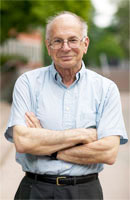The Availability Heuristic
 As someone who has been working in the field of behavioral economics for a couple decades now, I have long been aware of what psychologists call “the availability heuristic.” This was a phenomenon described by Kahneman and Tversky in some of their seminal research from the early 1970s. I recently came across a nice example of this heuristic when reading Fooling Houdini, a book I have been blogging about recently. If you don’t know what this heuristic is, the following quote from Stone’s book will provide a nice example:
As someone who has been working in the field of behavioral economics for a couple decades now, I have long been aware of what psychologists call “the availability heuristic.” This was a phenomenon described by Kahneman and Tversky in some of their seminal research from the early 1970s. I recently came across a nice example of this heuristic when reading Fooling Houdini, a book I have been blogging about recently. If you don’t know what this heuristic is, the following quote from Stone’s book will provide a nice example:
“When law enforcement agencies began putting pictures of missing children on the backs of milk cartons, for instance, the perceived rate of childhood abductions, as measured by national surveys, shot up drastically.”
When trying to figure out how common something is, we rely upon how easily instances of these phenomena come to our minds. When authorities began picturing children on the sides of milk cartons, images of abducted children with that much easier for us to retrieve – they are that much more available to our conscious awareness – causing us to mistakenly think these awful events were more common than they really were.
